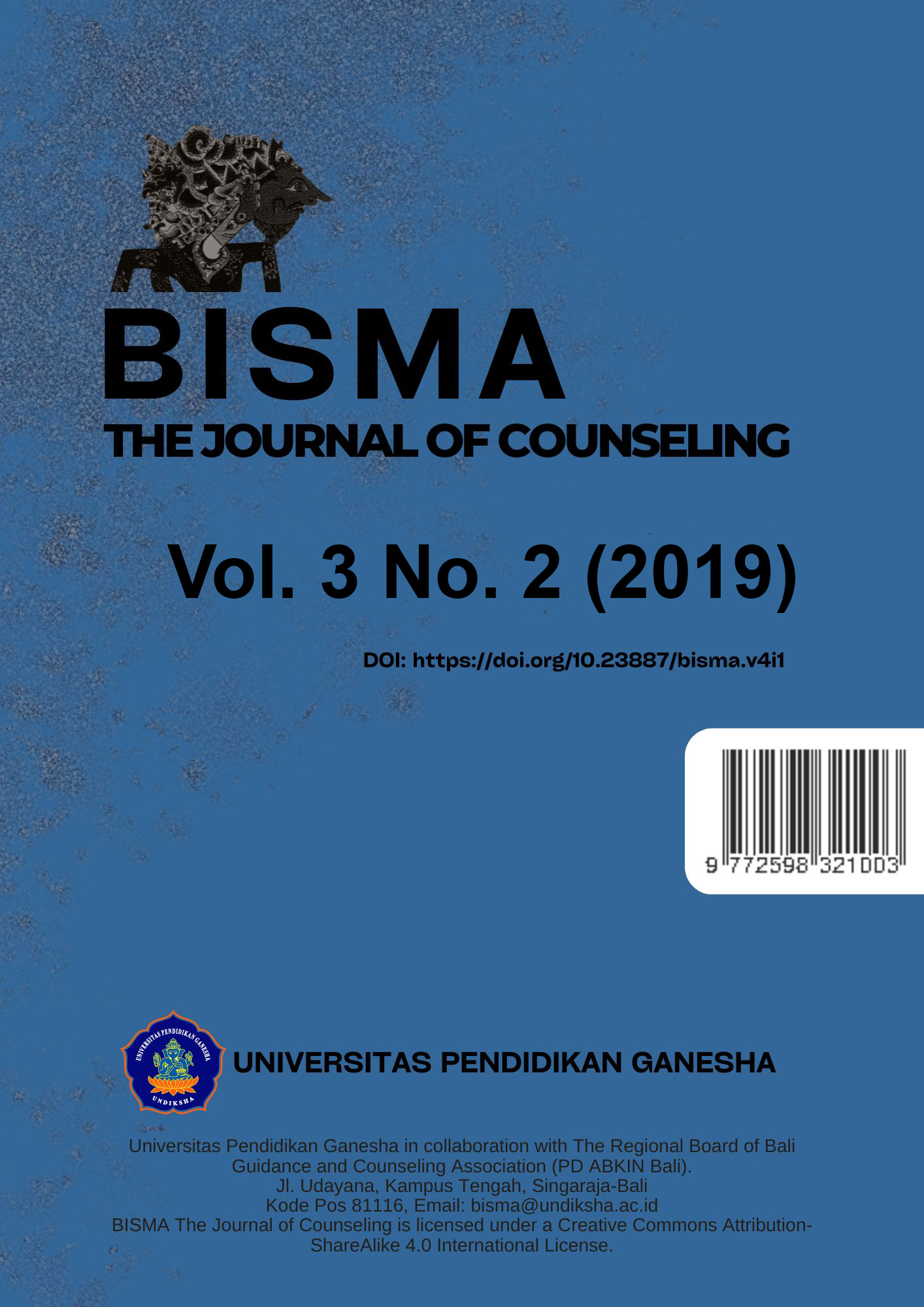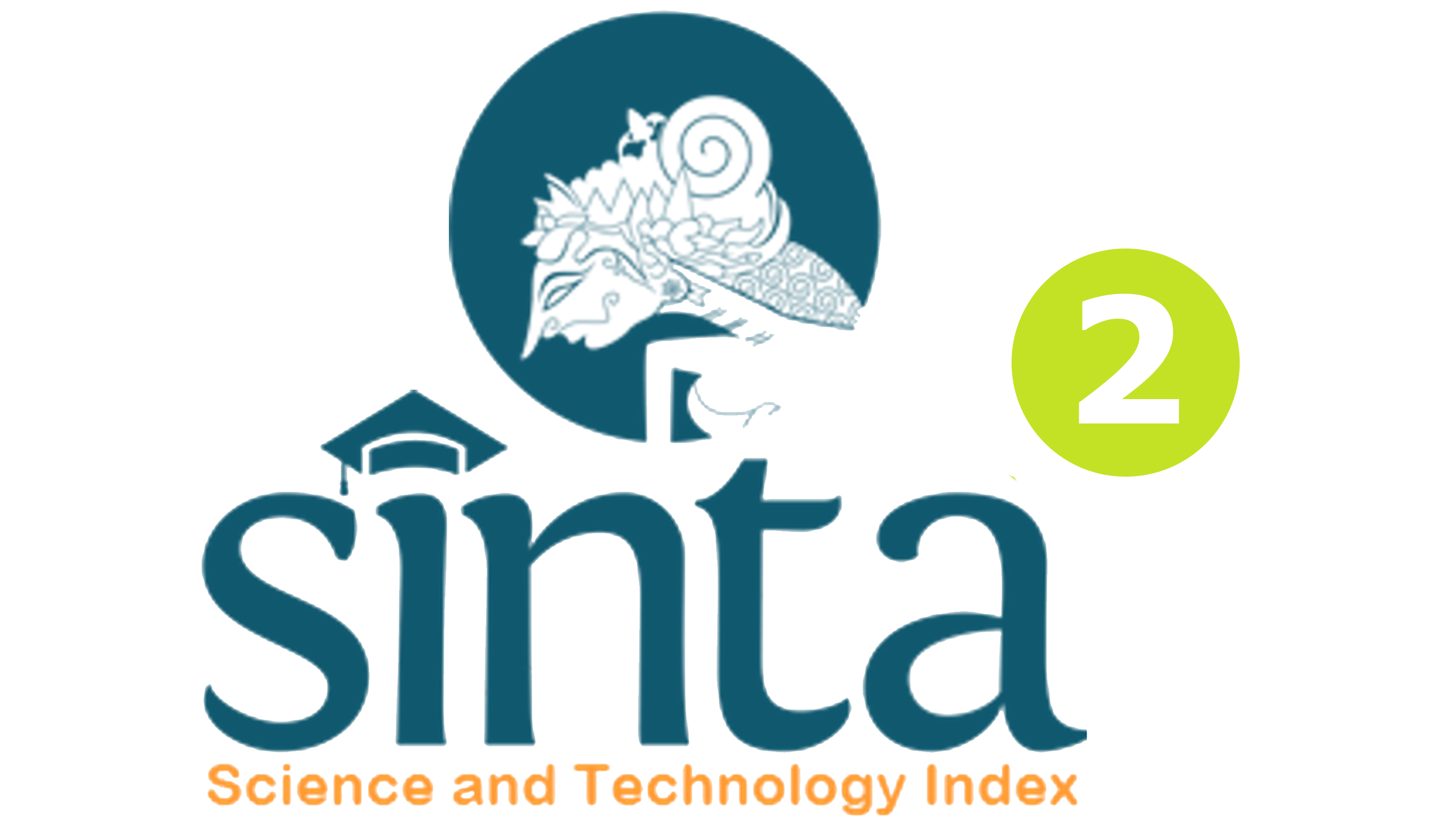The Two Stay Two Stray Method for Developing Interpersonal Communication
DOI:
https://doi.org/10.23887/bisma.v3i2.22608Keywords:
Classical Guidance, Two Stay Two Stray, Interpersonal CommunicationAbstract
This research is motivated by students who are unable to appreciate friends or other people who are talking, cannot be good listeners, do not speak when meeting other people on the street, do not shake hands with the teacher they meet, students are less able to communicate in good language to the teacher or friend, unable to respond properly when invited to speak. This type of research is a quantitative research design of quasi-experimental from nonequivalent control group design with the pre-test model post-test control group design. The population of this research is the students of class XI Accounting 1, XI Marketing 2, XI Animation SMK Muhammadiyah 1 Semarang. The sampling used in this study is Simple Random Sampling. The data analysis technique used is percentage analysis with t-test. The results of the interpersonal communication scale of the experimental group using the t-test post-test results showed an average of the experimental group of 79.5% and the control group of 71.23%. So that there was an increase in the experimental group by 8.27%. In the calculation of the t-test results obtained at the count (12.99)> t table (2.00). Then the working hypothesis (Ha) is accepted, and the null hypothesis (Ho) is rejected. It was concluded that there was an influence of classical guidance with the two stay two stray method on interpersonal communication of class XI students of SMK Muhammadiyah 1 Semarang.
References
Arifin, Andi Agustan. 2015. Teknik Two Stay Two Stray dalam Bimbingan Kelompok Untuk Meningkatkan Wawasan Siswa Dalam Pemilihan Jurusan di Perguruan Tinggi Negeri. FKIP Universitas Khairun. Vol. 1 No. 1
Arikunto, Suharsimi. 2013. Prosedur Penelitian Suatu Pendekatan Praktik. Jakarta: Bumi Aksara
Fatturokhman, Muhammad. 2017. Model-model Pembelajaran Inovatif. Yogyakarta : Ar-ruzh Media
Patriana, Eva. 2014. Komunikasi Interpersonal Yang Berlangsung Antara Pembimbing Kemasyarakatan Dan Keluarga Anak Pelaku Pidana Di Bapas Surakarta. Universitas Sebelas Maret Surakarta. Vol. V No. 2
Sugiyono. 2017. Metode penelitian pendidikan pendekatan kuantitatif, kualitatif, dan R&D. Bandung: Alfabeta
Sugiyono, 2018. Metode Penelitian Kuantitatif, Kualitatif, dan R&D. Bandung : Alfabeta CV
Sulistiyana. 2016. Upaya Meningkatkan Komunikasi Interpersonal Menggunakan Latihan Asertif Di SMA Negeri 1 Banjarbaru. Jurnal Konseling GUSJIGANG vol.2 no.1
Tohirin. 2011. Bimbingan dan Konseling di Sekolah dan Madrasah (Berbasis Integrasi). Jakarta: Rajawali Pers
Downloads
Published
Issue
Section
License
BISMA the Journal of Counseling is an Open Access Journal. The authors who publish the manuscript in this journal agree to the following terms:
BISMA Journal is licensed under a Creative Commons Attribution 4.0 International License. This permits anyone to copy, redistribute, remix, transmit and adapt the work provided the original work and source is appropriately cited.
This means:
BISMA The Journal of Counseling is licensed under a Creative Commons Attribution 4.0 International License.
(1) Under the CC-BY license, authors retain ownership of the copyright for their article, but authors grant others permission to use the content of publications in BISMA Journal in whole or in part provided that the original work is properly cited. Users (redistributors) of BISMA Journal are required to cite the original source, including the author's names, BISMA Journal as the initial source of publication, year of publication, volume number, issue, and Digital Object Identifier (DOI); (2) The authors are the copyright owner of the article, and the author grants the BISMA Journal held the first publication right.








